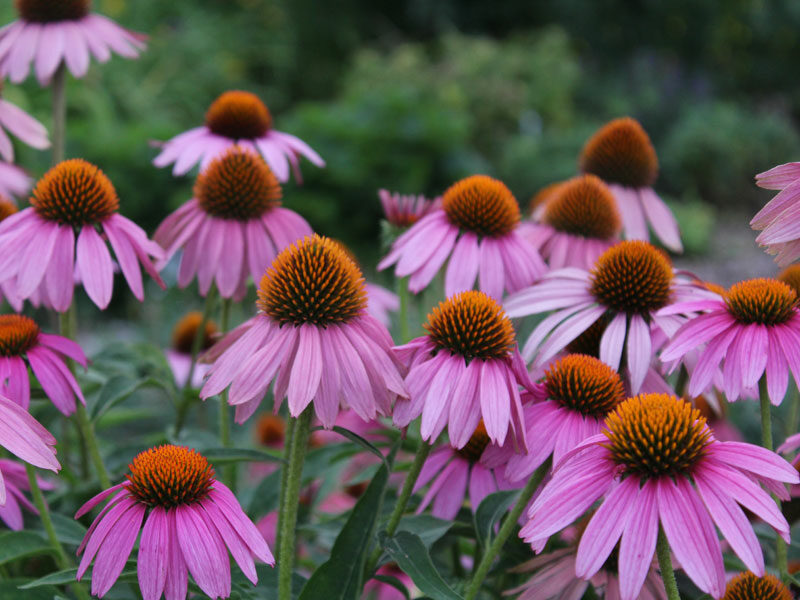Echinacea (Echinacea angustifolia)

Echinacea comes from North America. The Indians used it mainly to treat wounds and respiratory diseases. Today, it is one of the most popular medicinal plants for the prevention and treatment of colds.
The coneflower, also called “hedgehog head” by gardeners, is a perennial, herbaceous composite plant that reaches a height of up to 80 cm. Its valuable constituents are primarily polysaccharide proteins that have immunostimulant properties. Both the herb and the root of echinacea are used medicinally in the form of pressed juice or tea.
When used externally, preparations of echinacea angustifolia have an anti-germ and anti-inflammatory effect and support wound healing.
However, the medicinal herb is used much more frequently internally for respiratory and urinary tract infections. A large number of studies have shown that echinacea increases the number of white blood cells (leucocytes) and the activity of macrophages. Infectious diseases and recurring infections can thus be fought off more effectively.
Basically, a permanent stimulation of the immune system leads to a suppression of the immune response. Therefore, coneflowers must not be used permanently, but should always be given breaks after proper use.